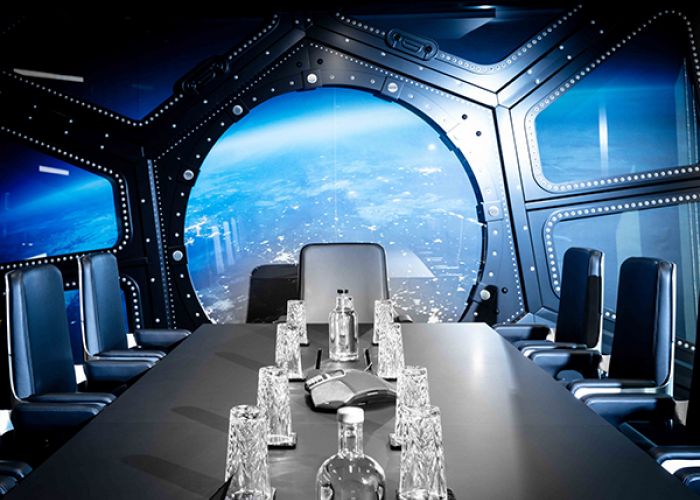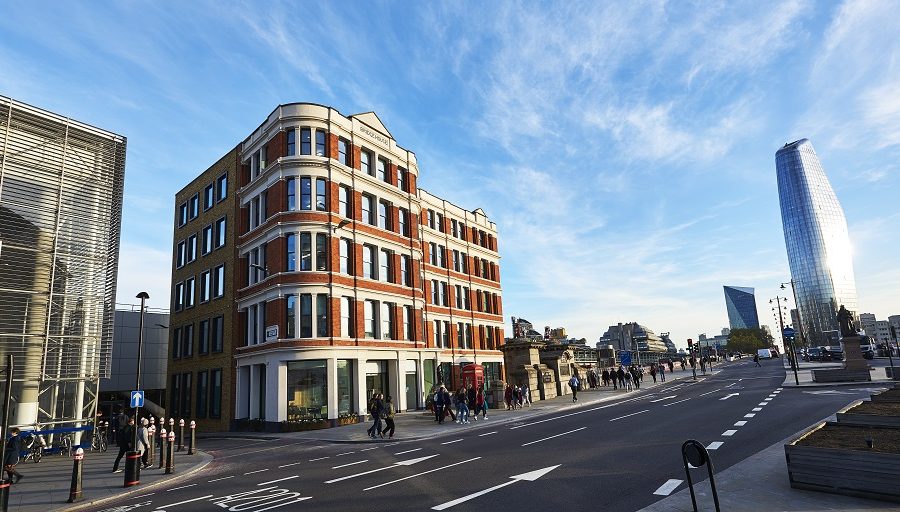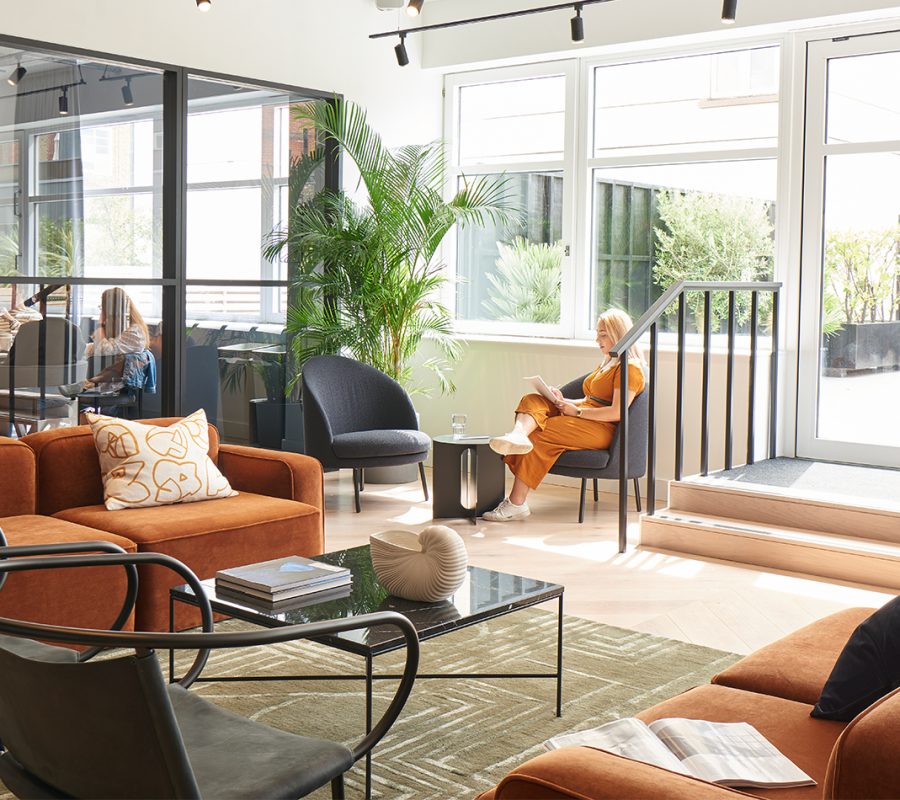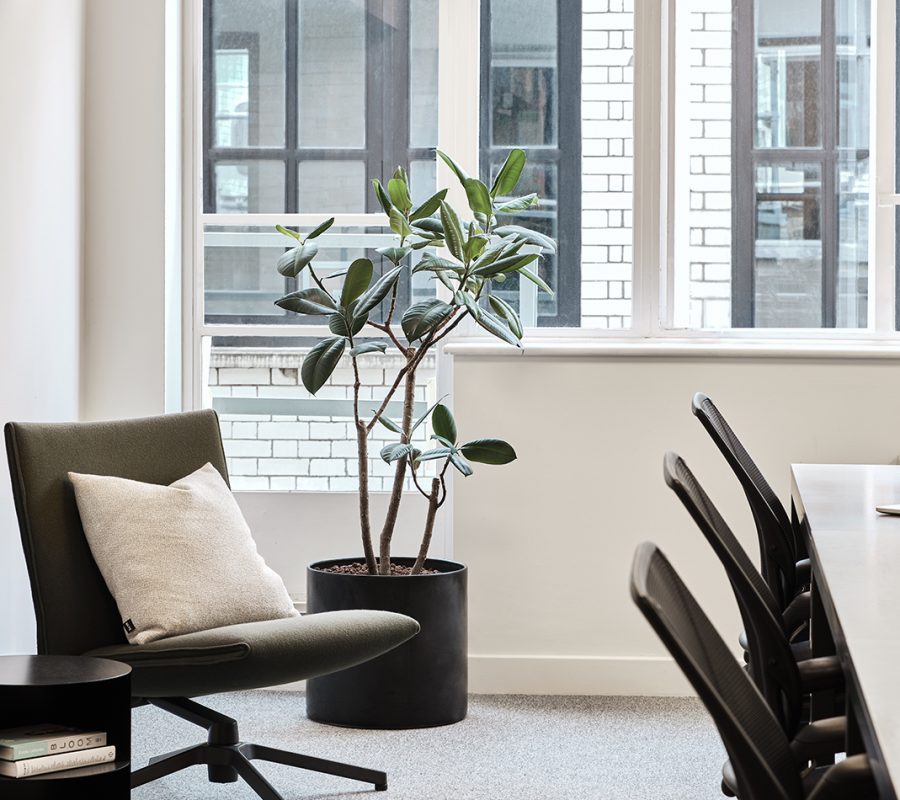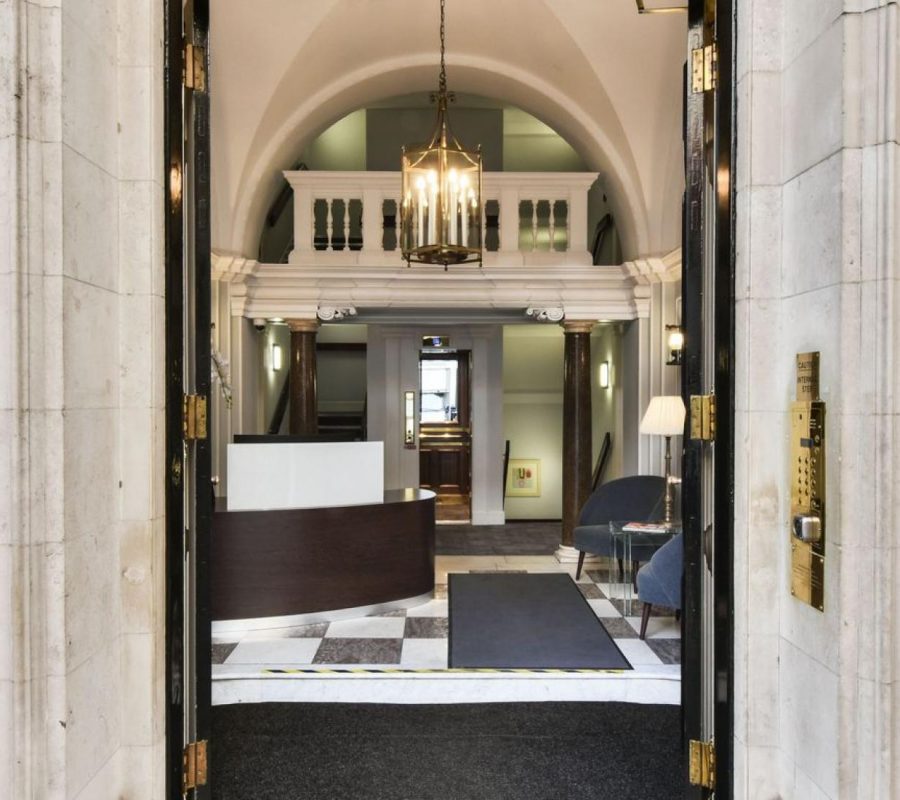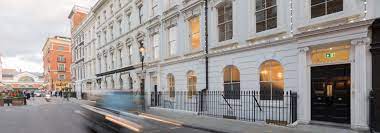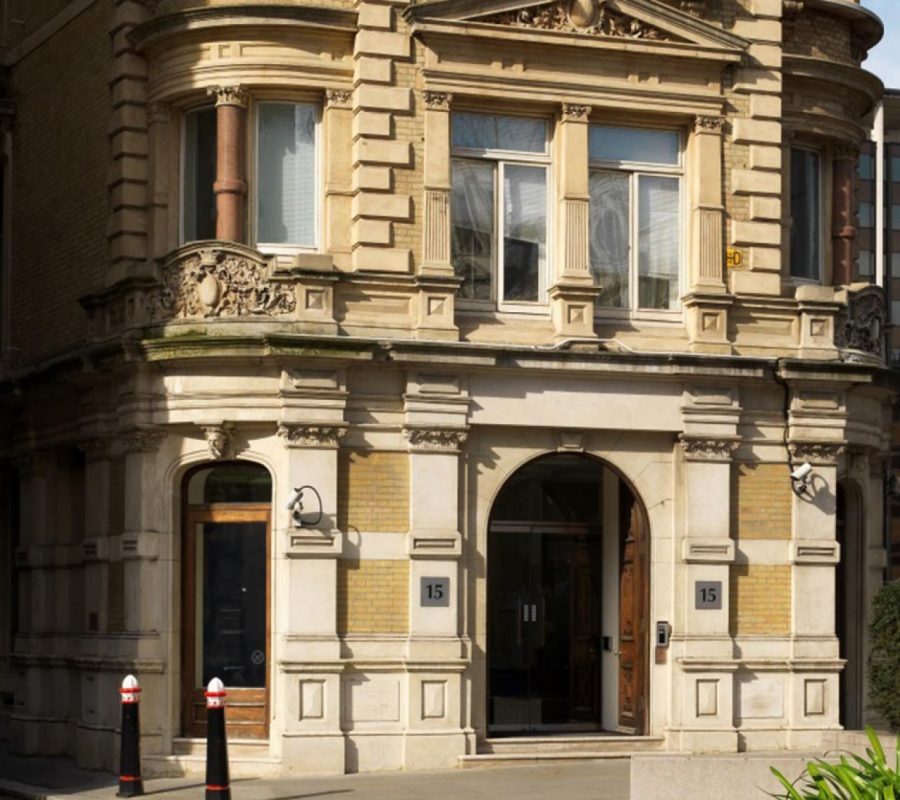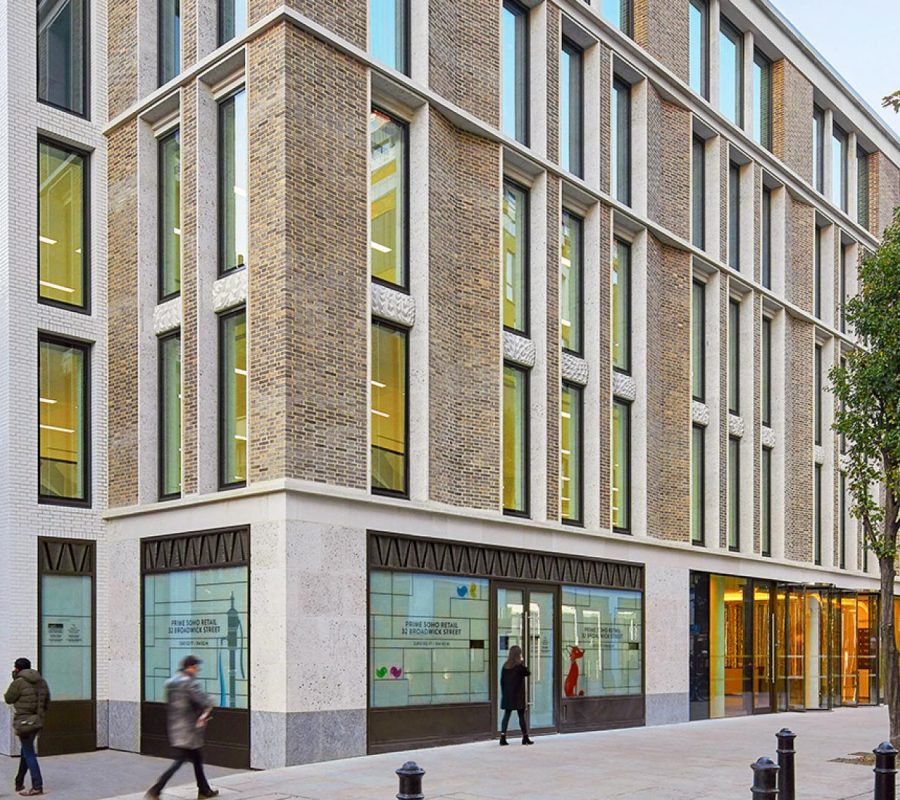Location:Strand
Strand Office Space
Strand, or The Strand as it is colloquially known, is rich in history and prestige and is what British Prime Minister Benjamin Disraeli described in 1889 as one of Europe’s “finest streets”. Once lined with the 18th-century mansions of the British aristocracy, today it is home to long-standing institutions and some of the best office space in London.
Strand derives from the word ‘beach’ and was known as the bank or beach of the River Thames. It was first recorded as ‘strondway’ in 1002. However, in the 1860s, the creation of the Victoria Embankment effectively pushed the river away from the Strand several hundred feet.
At just over 0.75 miles (1.2 km), Strand is a major thoroughfare that connects the City of Westminster and the City of London and forms part of the West End. It runs eastwards from Trafalgar Square to Temple Bar, where the road becomes Fleet Street and forms part of the A4.
During the Middle Ages, Strand became the main route between the separate settlements of the City of London and the royal Palace of Westminster. Before that, from the 12th century, large mansions lined the thoroughfare, including several palaces and townhouses inhabited by bishops and royal courtiers, many with their own river gates and landings directly on the River Thames.
Strand was the location of several important buildings, such as Essex House, originally an Outer Temple of the Knights Templar in the 11th century. Arundel House was originally the townhouse of the Bishops of Bath and Wells. It became the meeting place of the Royal Society in 1666 after the Great Fire of London destroyed their previous venue. This was demolished in 1678.
Somerset House was built by the Duke of Somerset, Edward Seymour, in the 16th century. After Somerset was executed in 1552, it became an occasional residence for Princess Elizabeth, and when she became Queen in 1558, she returned part of the house to Seymour’s family. After Elizabeth died in 1603, it was owned by Anne of Denmark and was renamed Denmark House to commemorate Anne’s brother, Christian IV of Denmark. The building was taken over by Parliament in 1645 following the Civil War, renaming it back to Somerset House.
Ownership changed several times, with parts of the building demolished and various areas of the site rebuilt. In the late 20th century, several art galleries, including the Courtauld Institute of Art and the King’s College London School of Law, were set up on vacant parts of the site.
Today, the Strand Campus of King’s College is home to its Faculty of Arts & Humanities, The Dickson Poon School of Law, the Faculty of Natural & Mathematical Sciences, the Faculty of Social Science & Public Policy, and King’s Business School.
The Savoy Palace was the London residence of John of Gaunt, who was King Richard II’s uncle and the nation’s power broker. In the 14th century, the Savoy was classed as the most magnificent nobleman’s mansion in England. However, it was destroyed during the Peasants’ Revolt of 1381. It was rebuilt as the Savoy Hospital for the poor in 1512 but gradually fell into dereliction and was divided into multiple tenancies. It was eventually demolished in 1820 during the development of the road.
The Savoy Hotel opened in 1889 at the site and is imbued with prestige and history. Opened by Richard D’Oyle Carte, who had made his fortune by putting on comic operas, it was the first luxury hotel in London, the first to have en-suite rooms, the first to have electric lights, and the first building in London to have an electric lift, known as the Ascending Room. It was also the first hotel in London to introduce room service, and guests would order using a ‘Speaking Tube’.
Its most famous previous employee is likely an Italian gentleman named Guccio Gucci. He was a porter at the hotel for 20 years from 1889 until returning to Florence to set up a leather goods store.
Other palaces along Strand were Durham House, which was the residence of the Bishop of Durham, built circa 1345 and was, at one point, the home of Anne Boleyn.
From the 17th century onwards, all of these palaces, along with York House, Cecil House, Worcester House, Bedford House, and Northumberland House, were demolished, apart from Somerset House.
Today, Somerset House is home to several hundred tenants from the cultural and creative sectors and has been used as a filming location for several films, including two James Bond movies.
During the 18th century, coffee and chop houses were established on the street. Twinings was established at No. 206 in 1706 by Thomas Twining. The company claims to be the oldest ratepayer in Westminster and has used the same logo since 1787, making it the world’s longest continuously used, unaltered logo.
Simpson’s in the Strand began as a coffee house in the 1820s. Later, it became a restaurant and a location where the best chess players in the world came to play. Today, many of its fixtures and fittings reference the game.
Architect John Nash, who was responsible for designing much of Buckingham Palace, redeveloped the western end of the Strand in the 1830s. The street became well known for theatres and, at one point, contained more than any other in London, including the Tivoli Music Hall, the Adelphi, the Gaiety, Terry’s, and Vaudeville.
In 2022, pedestrianisation works were completed on Strand between Melbourne Place and Lancaster Place, and Aldwych was converted into a two-way street. In 2023, London’s 1000th blue plaque was unveiled on Robert Street, off Strand, on the building where the Women’s Freedom League was based between 1908 and 1915. The League had campaigned for women’s right to vote and succeeded when it became an act of parliament approving a partial vote in 1918.
For those who rent office space on Strand, there is an abundance of amenities, and occupiers enjoy easy access to the theatres, shops, bars, and restaurants of the West End.
180 Strand is home to Michelin-starred restaurant Ikoyi and international private members’ club Soho House. The Savoy Hotel is home to several celebrated restaurants, including Gordon Ramsay’s 1890, which honours the hotel’s chef that year, Auguste Escoffier—a man responsible for creating fine dishes and the reason the word ‘scoff’ is used in reference to the enjoyment of food.
Businesses seeking office space on Strand and close by can choose from a menu of prestigious and impressive office spaces.
Eighty Strand, for instance, is of palatial proportions and offers some of the largest office floors in the West End.
With Art Deco features, complemented by light-filled contemporary spaces with riverside views,
The building has achieved WiredScore Gold, offers amenities such as terraces and cafes, and provides modern end-of-trip facilities, 38 showers, 530 lockers and state-of-the-art changing rooms, 406 secure bike racks and a car park.
Offices can be rented here on a traditional leasehold basis, but if greater business agility is required, flexible office space and workspace alternatives can also be chosen.
Eighty Strand, like others in the locale, offers serviced private offices, managed offices, and co-working spaces. These are held on short-term licences that can be extended if desired.
As the occupancy contracts are flexible, tenants can easily expand into a larger space if required. Floors in Strand offer space for up to 400 desks—some of the largest private offices in London.
As the offices are fully fitted and ready to use, little to no capital expenditure is required for fit-out. The rental packages are all-inclusive, meaning that utilities, cleaning, IT services, and other items are included, as are business rates in many cases.
The premium offices in Strand also offer enhanced services, including reception and secretarial services, concierge services and meeting and boardrooms that can be used ad hoc.
Office space occupiers along Strand include asset management company PGIM at Grand Buildings, 1 – 23 Strand, financial specialists Punter Southall, who are based at No. 11 Strand, and private equity and investment advisory firm CVC, which leases just over 30,000 square feet of space at 111 Strand.
Occupiers of office space on Strand enjoy excellent transport links – Charing Cross railway station was built in 1864, providing a boat train service to Europe. Today, it offers tube and rail services. Other London Underground tube stations serving Strand include Embankment, Covent Garden, Leicester Square and Temple.


